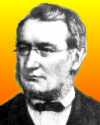
On 20 Mar 1878, Julius Robert Mayer died, a German physicist who had the idea of the conservation of energy before either Joule or Helmholtz. He held that solar energy was the ultimate source of all energy on earth, both living and nonliving.
In this excerpt from “The Century’s Progress in Physics” in Harper’s New Monthly Magazine (1897) on Julius Robert Mayer and the Conservation of Energy you glean more of the historic background on this topic.
As you read the extract, you may reflect on the intellectual capacity for science of 19th-century readers of Harper’s, an otherwise general-interest magazine.

On 20 Mar 1962, Andrew Ellicott Douglass died. He was an American astronomer and climatologist who established the new field of dendrochronology (a name he coined) for the analysis of tree rings to date and interpret past events. It was his interest in predicting sunspots that led to development of tree-ring dating in his adopted Arizona. He began to collect tree specimens, believing that variations in the width of tree rings would show a connection between sunspot activity and the terrestrial climate and vegetation. That in turn revolutionized archaeology in the Southwest (because ruins containing wooden logs, beams or wooden artifacts could be dated from the pattern of their tree rings in the wood). In turn, there came wide-ranging applications of dendrochronology to the study of past and future climates of the entire globe. Today's book pick is: Tree Rings and Telescopes: The Scientific Career of A. E. Douglass, by George E. Webb. The information presented by the author is well-written and will prove useful to those working with the history of archaeology.
It is available from Amazon, typically about Used from $45.00. (As of earlier time of writing - subject to change.)
 | A scientist strives to understand the work of Nature. But with our insufficient talents as scientists, we do not hit upon the truth all at once. We must content ourselves with tracking it down, enveloped in considerable darkness, which leads us to make new mistakes and errors. By diligent examination, we may at length little by little peel off the thickest layers, but we seldom get the core quite free, so that finally we have to be satisfied with a little incomplete knowledge. |
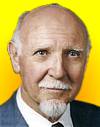 | But psychology is a more tricky field, in which even outstanding authorities have been known to run in circles, ‘describing things which everyone knows in language which no one understands.’ |
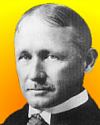 | We can see our forests vanishing, our water-powers going to waste, our soil being carried by floods into the sea; and the end of our coal and our iron is in sight. But our larger wastes of human effort, which go on every day through such of our acts as are blundering, ill-directed, or inefficient, … are less visible, less tangible, and are but vaguely appreciated. |
| Before you look at today's web page, see if you can answer some of these questions about the events that happened on this day. Some of the names are very familiar. Others will likely stump you. Tickle your curiosity with these questions, then check your answers on today's web page. | |
| Births | |
 | An American psychologist born 20 Mar 1904 studied the learning processes of animals by providing a lever, or such, to deliver a reward or punishment when the animal pressed it. He extended his theories to the behavior of humans. What is the name of this scientist? |
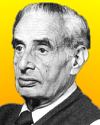 | Walter M. Elsasser, born 20 Mar 1904, was a German-born American physicist who proposed an explanation for the origin of the Earth’s magnetic field which is still accepted today. What is the model he proposed for the Earth’s magnetic field? |
| Deaths | |
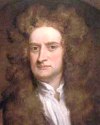 | An English physicist and mathematician (1642-1727) made seminal discoveries in several areas of science, and was the leading scientist of his era. His study of optics included using a prism to show white light could be split into a spectrum of colours. The statement of his three laws of motion are fundamental in the study of mechanics. He was the first to describe the moon as falling (in a circle around the earth) under the same influence of gravity as a falling apple. Can you name this scientist? |
| Events | |
 | On 20 Mar of a certain year, America’s first demonstration of the alternating-current system provided lighting along Main Street at Great Barrington, Massachusetts, powered by the first AC power plant in the U.S. to begin commercial operation. Who was the 39-year-old inventor of this AC power system? |
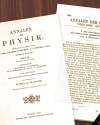 | On 20 Mar 1916, Albert Einstein’s Theory of General Relativity was published. It provided an explanation of a phenomenon in the observed path of Mercury that Newton’s gravitational theory could not. It was verified by an astronomical event in 1919. What type of event in 1919 provided the verification of Einstein's theory? |
Fast answers for the previous newsletter for March 19: discovery of artificially prepared, radioactive isotopes of new elements • chlorofluorocarbon (CFC) gases • the decade including the year 1929 • Madame Tussaud’s • to test effects of rapid deceleration from high speed on the human body - to simulate the experience for pilots bailing out of supersonic jet airplanes - by rapidly braking the speeding sled • electric eels.
 If you enjoy this newsletter, the website, or wish to offer encouragement or ideas, please send feedback by using your mail reader Reply button.
If you enjoy this newsletter, the website, or wish to offer encouragement or ideas, please send feedback by using your mail reader Reply button. Your click on a Facebook, StumbleUpon, or other social button on the site webpages is also a welcome sign of appreciation. Thank you for using them.
© This newsletter is copyright 2020 by todayinsci.com. Please respect the Webmaster's wishes and do not put copies online of the Newsletter — or any Today in Science History webpage. (If you already have done so, please remove them. Thank you.) Offline use in education is encouraged such as a printout on a bulletin board, or projected for classroom viewing. Online, descriptive links to our pages are welcomed, as these will provide a reader with the most recent revisions, additions and/or corrections of a webpage. For any other copyright questions, please contact the Webmaster by using your mail reader Reply button.
--
If you do not want to receive any more newsletters, Unsubscribe
To update your preferences and to unsubscribe visit this link
Executive Real Estate Business Class
-
"It was like a man with wings. It wasn't like anything you'd see on TV or in a monster movie." ...
About the publisher
Search This Blog
Blog Archive
-
▼
2021
(585)
-
▼
March
(44)
- Newsletter for Wednesday 31 March.
- On This Day for March 30 - Failed assassination at...
- Newsletter for Tuesday 30 March.
- On This Day for March 29 - Dominion of Canada crea...
- Newsletter for Monday 29 March.
- The real history behind new film 'Ammonite', starr...
- On This Day for March 28 - Constantinople renamed ...
- Newsletter for Sunday 28 March.
- On This Day for March 27 - Cleopatra reinstated as...
- Newsletter for Saturday 27 March.
- Catch a break with spring savings
- On This Day for March 26 - Signing of Israel-Egypt...
- Newsletter for Friday 26 March.
- On This Day for March 25 - Robert the Bruce crowne...
- On This Day for March 24 - Exxon Valdez Alaskan oi...
- Newsletter for Wednesday 24 March.
- On This Day for March 23 - Lewis and Clark's retur...
- Newsletter for Tuesday 23 March.
- On This Day for March 22 - Murder at Jamestown, Ya...
- Newsletter for Monday 22 March.
- Roman medicine: 6 ways people stayed healthy
- On This Day for March 21 - Closing of Alcatraz pri...
- Newsletter for Sunday 21 March.
- On This Day for March 20 - AUM subway attack, Maud...
- Newsletter for Saturday 20 March.
- On This Day for March 19 - Iraq War begins, Glenn ...
- Newsletter for Friday 19 March.
- On This Day for March 18 - Election of Chen Shui-b...
- On This Day for March 17 - Vote to end apartheid, ...
- On This Day for March 16 - My Lai Massacre, Caroli...
- On This Day for March 15 - Julius Caesar assassina...
- On This Day for March 14 - Reelection of Vladimir ...
- Newsletter for Sunday 14 March.
- On This Day for March 13 - The planet Uranus disco...
- Newsletter for Saturday 13 March.
- Newsletter for Friday 12 March.
- Newsletter for Thursday 11 March.
- Newsletter for Wednesday 10 March.
- On This Day for March 9 - Battle of the Monitor an...
- Newsletter for Monday 8 March.
- Newsletter for Sunday 7 March.
- On This Day for March 6 - King Tut's tomb opened, ...
- On This Day for March 2 - Moroccan independence de...
- On This Day for March 1 - Establishment of Yellows...
-
▼
March
(44)
-
Blogroll
-
About
HistoryFact










0 comments:
Post a Comment